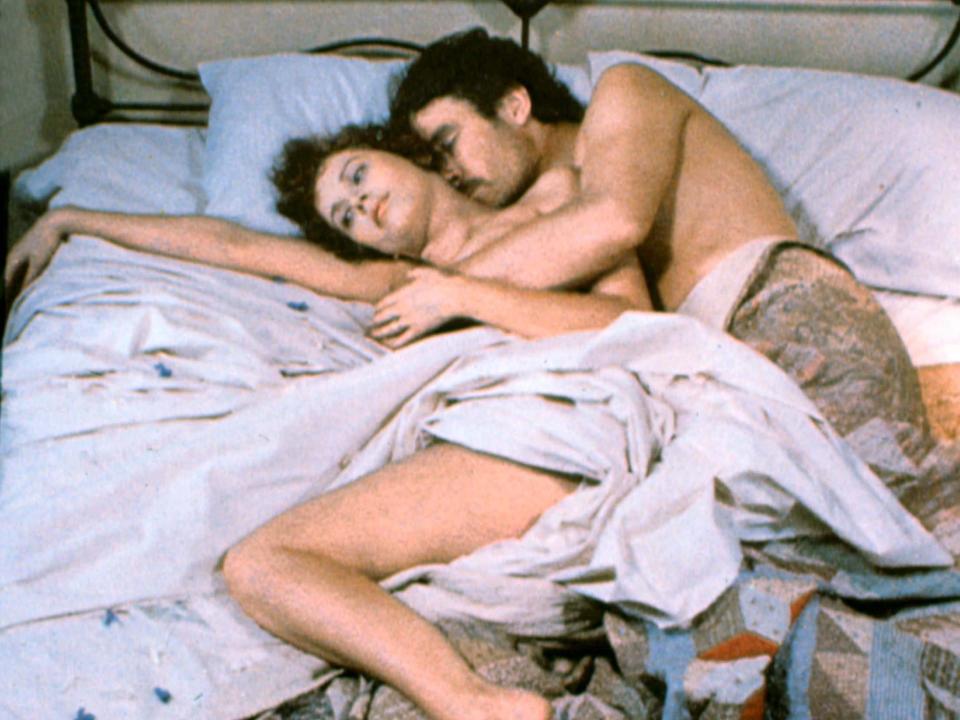What sex tells us about society: Sally Rooney’s Normal People and DH Lawrence’s Lady Chatterley’s Lover
It is more than 90 years since DH Lawrence’s famously outrageous novel Lady Chatterley’s Lover was first published and times have certainly changed since then. Nowadays stories full of explicit eroticism, affairs and female pleasure are no longer labelled “obscene”. Sally Rooney’s Normal People, Costa Novel of the Year 2018, revisits many of the issues and the ostensible plot of Lady Chatterley. Both raise the question: what can sex tell us about society?
Normal People is basically a romance, but it’s a romance that crosses class boundaries. Rooney has been called “Salinger for the Snapchat generation”. But the plot of Normal People is also a 21st century Lady Chatterley’s Lover: a rich woman having an intense sexual relationship with a poor man, a man positioned in a kind of servile relation to her. Also, as in Lady Chatterley, a man shown to be thoughtful, intelligent, and educated; a meeting of minds as well as bodies. The love story allows escapism, the class story says a lot about the age of austerity, both in Ireland, where the novel is set, as well as in the UK.
Lawrence’s work was infamous for its shock value. It was first published in Italy in 1928 and only appeared officially in its uncensored version in the UK in 1960. Its publisher, Penguin Books, was taken to court under the Obscene Publications Act. This was an age on the brink of the pill, sexual liberation, feminism, and yet explicit descriptions of sex in fiction still caused public outrage. Penguin Books was acquitted because the defence proved the literary merit of Lawrence’s writing, which elevated the book from “obscenity” to “art”. But what’s the difference? Normal People and Lady Chatterley are a far cry from Fifty Shades of Grey (also about “transgressing” class boundaries). But why?
They have style, structure, in effect a story that grips us and moves us along. And yet neither Lady Chatterley nor Normal People is a really intense page-turner. Rooney’s first book, Conversations with Friends, has far more suspense. It tells the story of an extramarital affair, so there is much more tension about whether or not the affair will be found out, will-he-won’t-he leave his wife, will-she-won’t-she fight for the relationship. And so on. In Normal People, at school Cornell is worried about what his friends would say about his relationship with Marianne, rich and aloof, considered “an object of disgust”. But by the time they get to university these concerns no longer seem to matter.
In Lawrence’s novel, Lady Connie Chatterley’s affair isn’t even much of a secret from her husband, Sir Clifford. After being paralysed from the waist down in the Great War, Clifford encourages Connie to find a lover so that she may conceive a child they could raise as their own. It is the social standing of her choice, their gamekeeper, Oliver Mellors, that would appal Clifford, not the fact of the affair itself.
So the relationships in both novels at first involve a degree of secrecy. But soon enough, even the suspense of secrecy dissipates. Connell and Marianne are casually open about their on-off relationship; their other partners never seem to create much pressure. Connie Chatterley goes on a European holiday to cast suspicion away from Mellors in case she does fall pregnant, but they plan to go public on her return (the Europe jaunt really loses its point…). These aren’t novels chock-a-block full of suspense. And yet, we care about them and consider them high literature.
The success of Lawrence and Rooney lies in the way that they use sex to talk about society. A winning combo that both attracts and provokes.
The way in which Lawrence and Rooney describe sex also shows us something about empathy and identification
The Cinderella arc is an old one. Poor girl meets prince. Love and life are transformed. We’ve seen this recently with the apparently insatiable interest in Prince Harry’s marriage to the “commoner” Meghan Markle, someone apparently distant from royalty, conservativism and the British class structure. The “rags to riches” tale certainly has an allure. It’s a romanticising of the American dream, allowing us to think that we might meet Mr Right, and he’ll be both charming and rich. All life’s problems solved in one.
But Lawrence and Rooney turn this old story on its head. First of all, it is the women who are rich and the men who are poor. And also, money and status are more a source of tension between the two couples than they are a component in their attraction. Mellors continually fears the fate that will befall him for having an affair with the lady of the estate. And, in their planned future together, he and Connie just want enough to get by rather than to live an indulgent high-society life.
In Normal People, Connell can’t afford to rent in Dublin all summer after his job has come to an end and he hopes he’ll be able to move in with Marianne. She thinks he’s telling her about his rent situation because he needs an excuse to break up with her and move back to County Sligo. So they go their separate ways once again. They find a temporary and precarious equilibrium when they both become Trinity scholars, with all of the financial benefits this entails (housing, food, etc), but by then they’re in relationships with other people, so it’s too late. Their love lives are inseparable from their social backgrounds and financial situation.

The way in which Lawrence and Rooney describe sex also shows us something about empathy and identification. Lawrence’s novel may have found its fame in its explicitness but, weirdly enough, it isn’t particularly erotic. The writing is lush with symbolism, space continually reflects character emotions, there are metaphorical nods to the reader at every turn – Mellors frequently wanders around with a loaded gun, a pretty heavy-handed metaphor for his potency, to name just one example. Yet the sexual descriptions leave the reader cold. Perspective has a lot to do with it. Most of the narrative prioritises Connie Chatterley’s point of view. The narrator has privileged insight into her thoughts and feelings.
Occasionally this slips – slippages that might not pass the beady eye of an editor in today’s competitive publishing industry (though I do wonder how someone as disorganised and haphazard – albeit as brilliant – as Lawrence’s Czech contemporary, Franz Kafka, would fare in the modern world of polished creative writing MFAs and editorial scrutiny). But it means that almost all the eroticism is heavily filtered through Connie’s perspective. Her awareness (via the narrator) of the “ridiculous bouncing of the buttocks, the wilting of the poor insignificant, moist little penis”, an example of God’s “sinister sense of humour”, then transforms itself into her own sensation of “melting in the flame” of desire as her arousal and pleasure increase. Her view is heavily present at every turn and, in a sense, this gets in the way.
Whereas there’s something attractively simple in Rooney’s sparse description. She never says more than is necessary, she never shouts significance at the reader, she just makes bare statements of fact. This is a hallmark of her style. And it’s refreshing. It’s like seeing photos on social media with the filters off. In Rooney’s first novel, Conversations with Friends, the cool voice of the first-person narrator, Frances, reflects her emotionally cool character. On the first page alone, Frances’s description of Melissa (the wife of her soon-to-be lover) as having “a big professional camera and [keeping] lots of different lenses in a special camera pouch” tells us all we need to know about the protagonist and narrator: she doesn’t give a crap about most other people. “Big”, “lots”, “professional”, “special”: words that at once express a kind of inferiority-complex awe about this successful, wealthy woman, and simultaneously a patronising and uninterested distance; she neither understands Melissa nor seeks to do so.
In Normal People, the narrative voice is again unemotive. And this is particularly visible in the descriptions of sex. One example is when Marianne and Connell make love during her period. She “was having cramps and said it might hurt to have sex, so [Cornell] just touched her until she came”. Cornell then goes to the bathroom to wash his hands. “In the mirror he noticed he had a little blood on his lower lip. He must have brushed it with his hand by accident.” There is no further commentary on Cornell’s realisation that he has Marianne’s menstrual blood on his face. It feels like it should be foreshadowing something significant, calling out something to the reader, or highlighting a crucial aspect of their relationship. But that’s it. It’s just left there without comment or reaction. This means that character perspective does not get in the way of reader identification.
The relative shock value of these two novels is also indicative of wider social norms: what interests us, what moves us, what scares us in different eras? Our attitudes to sexuality may have changed since Lawrence’s day, but Normal People still has the power to unsettle – even though Rooney is pushing at different boundaries, now relating to notions of control and consent. Pitted against the magnetic bond between the protagonists, Marianne and Connell, is Marianne’s experimentation with sadomasochism. She has other relationships that involve some kind of dominance-submission dynamic and violent role play. Rooney suggests Marianne’s interest in S&M lies in a history of abuse in her family, and this exploration is very different from Lawrence’s celebratory tone of equal and loving sexual pleasure. Cornell occasionally feels he could and might hurt Marianne, an impulse that scares him. From going into the intimate bodily sensations of erotic relationships in Lady Chatterley, what is most disturbing in Normal People is the intimate emotion behind those relationships. If Rooney is making a point about the abuse of the individual leading to a mindset of self-harm and depression, then she makes it subtly with none of the rich metaphor of Lawrence. Yet both Rooney and Lawrence show love as fragile and desperately trying to exist in a destructive environment, where background, money, work and other people all threaten to drown it out.
But for all the talk of sex, the main battle raging in Lady Chatterley isn’t between husband and wife, or even between pornography and public decency. Lawrence is fighting against an old-order conservativism, conjuring an age filled with the terror of industrialisation and the machination of man, the rise of workers’ rights and suffragist movements, and disillusionment with politics and religion after the horror of the First World War. While the upper-class man represents the stubborn-headed idiocy of conservativism, the well-to-do woman and working-class man at the centre of this novel are shown to be intelligent, thoughtful and passionate. This is a message to which Rooney returns. And again, she communicates it through the subtle undulations of love and sex. Cornell and Marianne make love at times because of what’s going on around them and at times in spite of it. It repeatedly acts as a mirror to circumstance and society.
So it may look like these novels are all about sex and class, but actually they’re talking about much more than that. The act of making love, a stripping bare of social costume, nudity as kind of leveller, allows the opening of a humanity that is much needed in the age of political turmoil, worldwide battlegrounds and social inequality. These are the issues that haunt both of these novels and both of their contexts. Sex may be the packaging. But it actually sets up a far subtler and more significant stage for social debate. They aren’t just porn; they’re literature precisely because they take the particular and make it general. They tell stories about idiosyncratic individuals that ironically involve us all.



